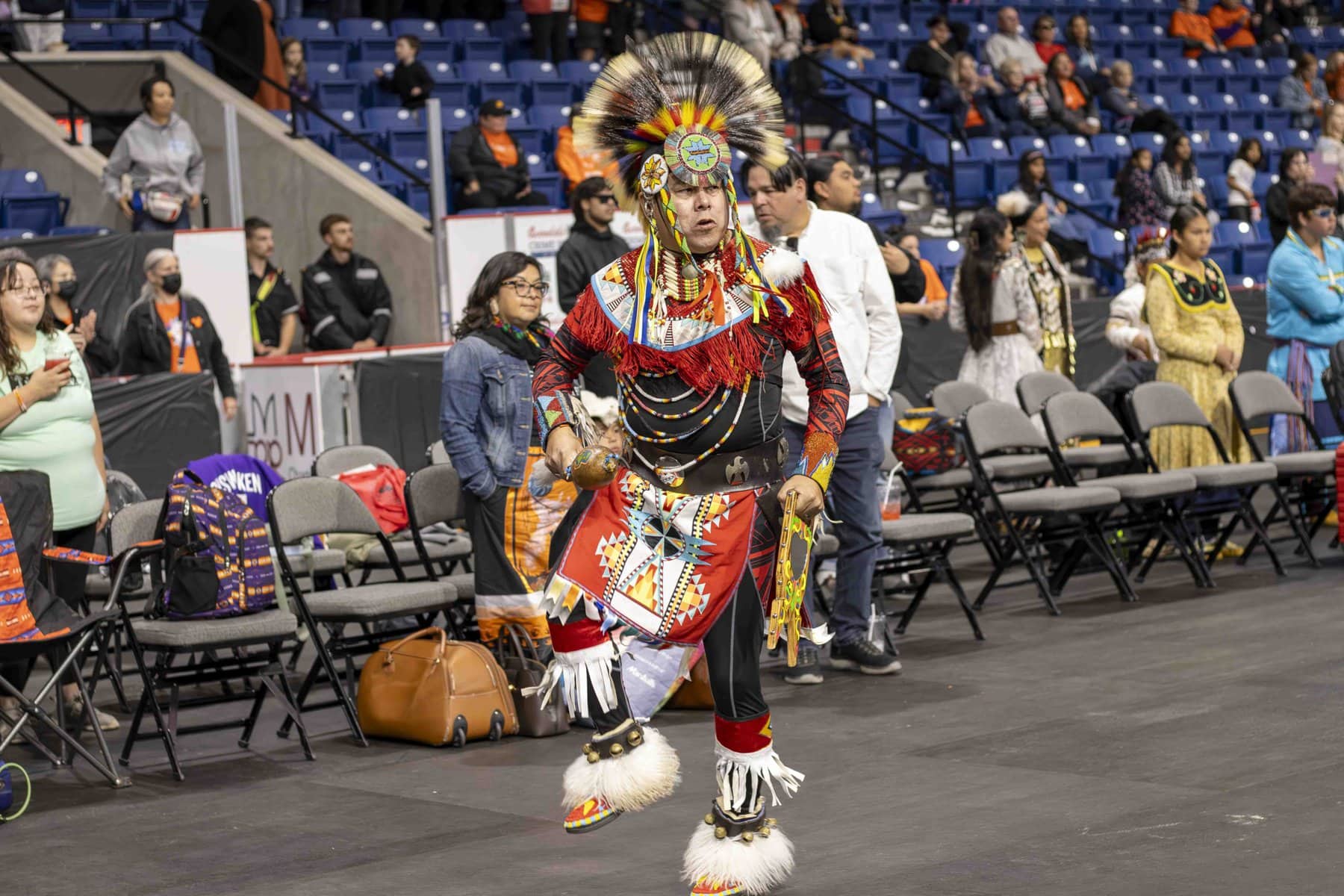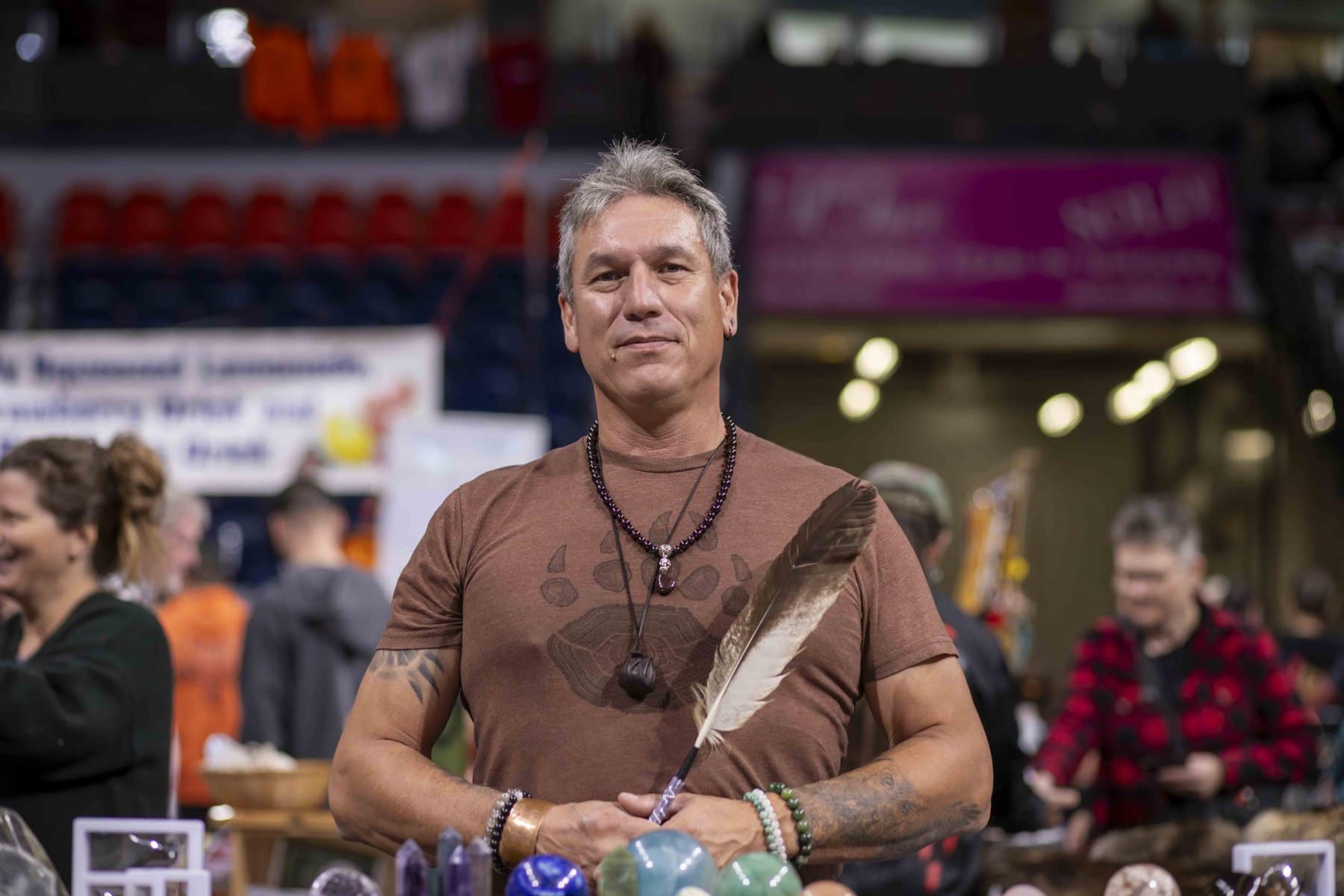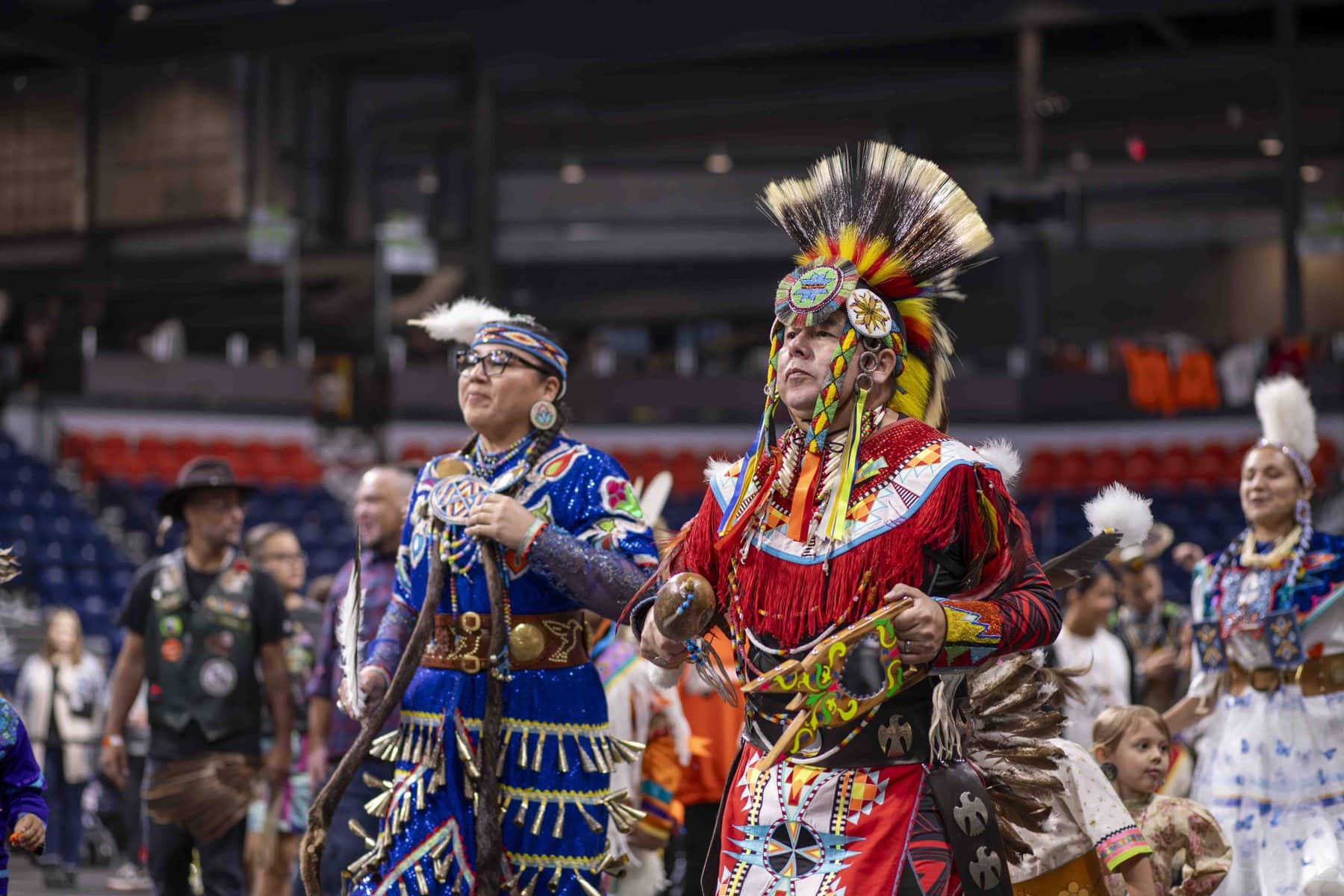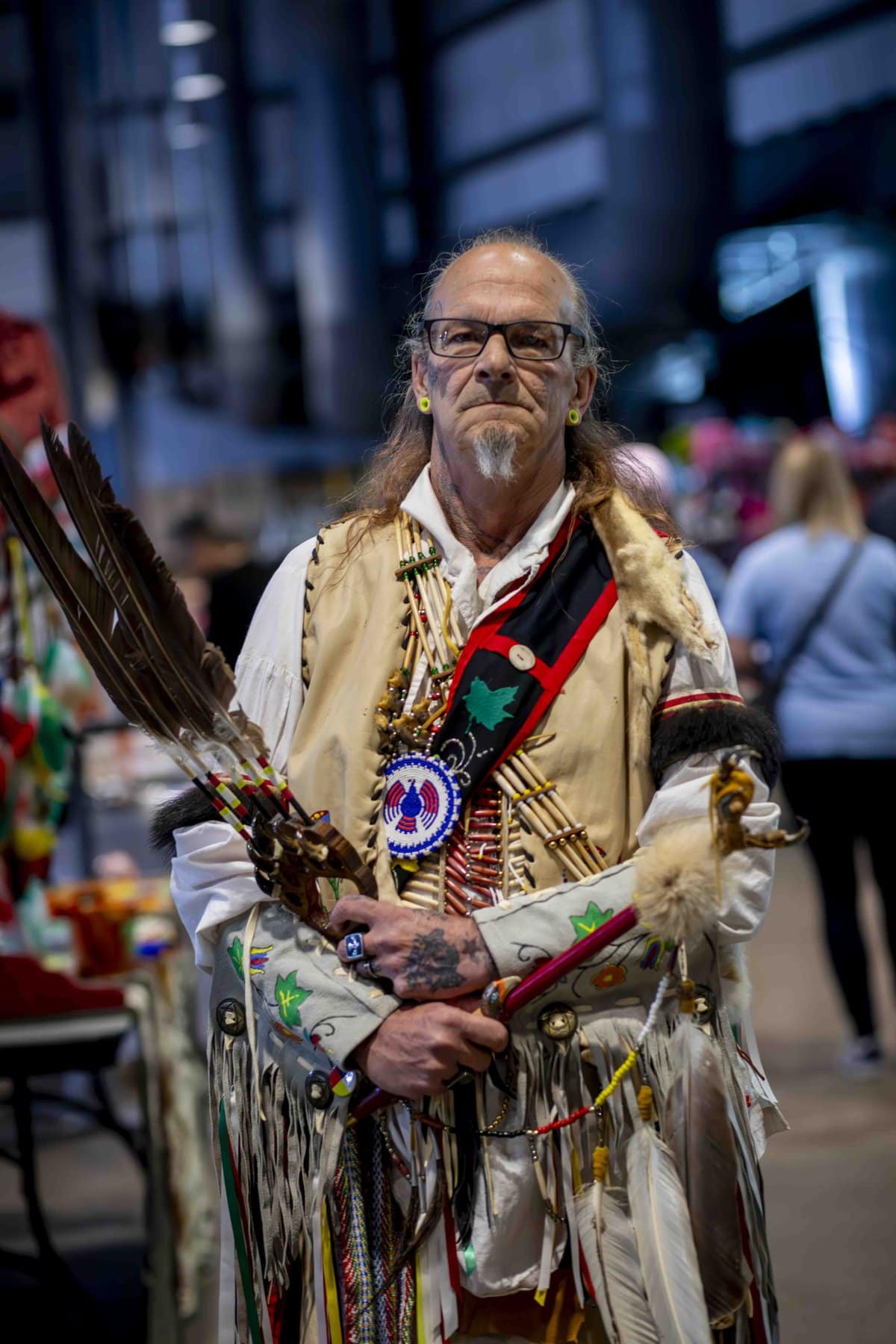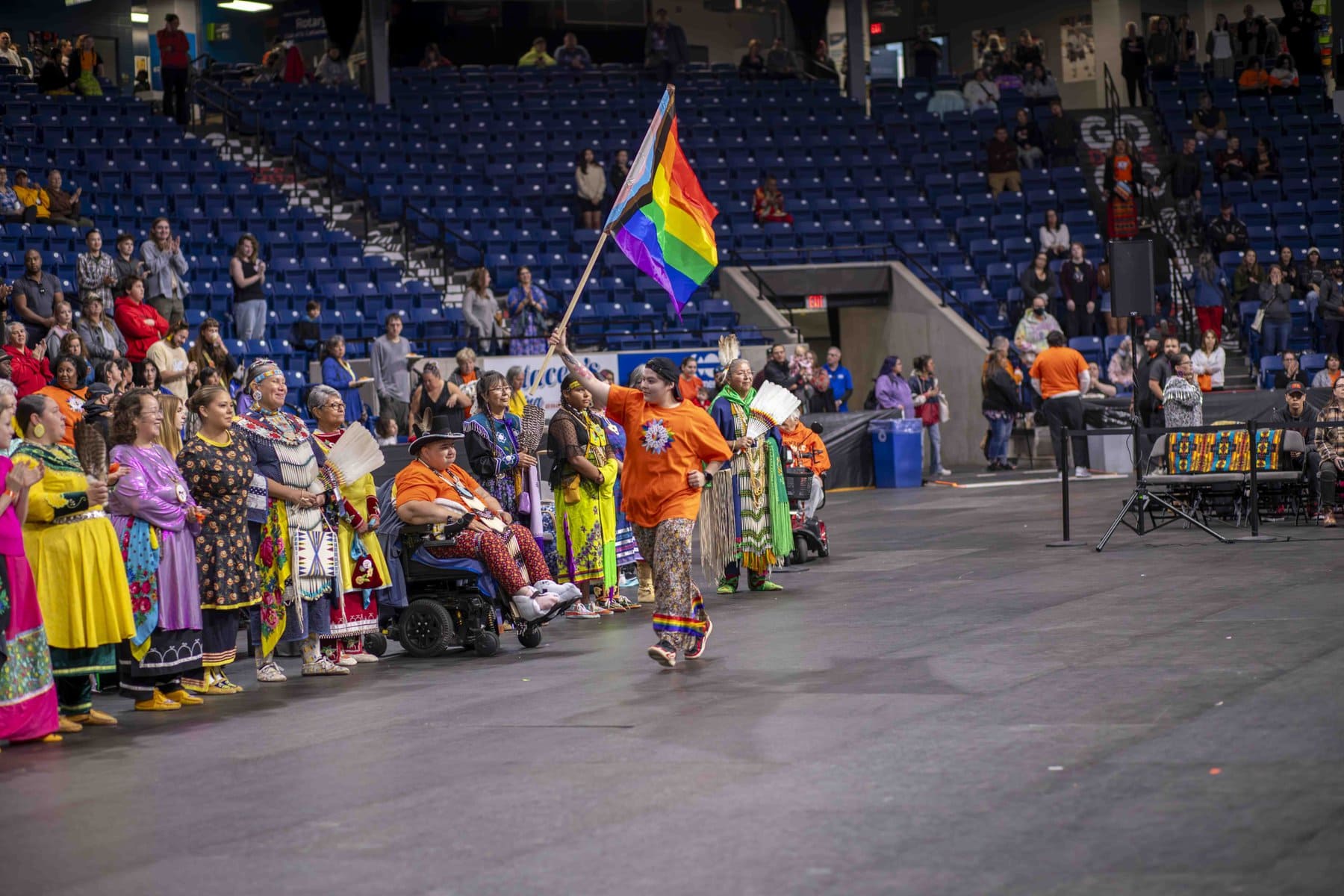Dancers were out in full regalia last Saturday at the Meridian Centre in downtown St. Catharines for the Niagara Regional Native Centre’s ninth-annual powwow.
It was a vibrant affair: the sound of people playing traditional music on the grandfather drums as attendees and participants from all over filled the Ice Dogs’ arena.
The theme of this year’s powwow was about honouring two-spirit and LGBTQIA+ people, who have always been close allies to – and members of – Indigenous communities, said Jay Lomax, one of the powwow’s head dancers.
“We’ve always respected that community and they always respected us,” said Lomax, who is from Dakota Tipi First Nation.
Lomax is a teacher at First Nations Technical Institute in Deseronto, Ont., and has been dancing at powwows for almost 30 years.
On Saturday, he was dressed as a prairie chicken dancer.
Both his cuffs and headdress contained traditionally beaded details and he wore a feather bustle in the back.
At the crown of his headdress were two eagle feathers.
For the Dakota people, it is customary to wear two eagle feathers in their headdress.
It’s about “acknowledging the eagle,” which in some communities is believed to carry prayers to the creator, he said.
As one of the head dancers, Lomax added, “We’re supposed to dance every song.”
It helps to keep the energy high and the beat going, he said.
After the opening procession, dancers began filling the floor in groups as visitors milled about exploring the wares of various vendors.
John Standingready was taking the occasional break from selling his wares to share the smoke of white buffalo sage with his peers.
Standingready is from White Bear First Nation in Saskatchewan and has been following powwows across Canada for most of his life.
His parents died about two years ago, he said, and sharing sage with his community has helped him process his grief.
Sage is often used as a sacred medicine in Indigenous communities along with tobacco, sweetgrass and cedar.
He also picked up sound healing after his parents died to help him heal, he said.
According to Standingready’s website, sound healing is a holistic practice that uses harmonic sound to combat anxiety and other mental health conditions.
“It was one way to release all this kind of bad energy I was holding onto,” he said.
He said his father was a traditional dancer and his daughter continues the tradition as a fancy shawl dancer to this day.
“I’ve been around the drum my whole life,” he said, adding that he goes through “powwow withdrawal” when he’s gone too long without visiting one.
Another vendor, an artist by trade, was visiting from Welland.
Richard Langlois, who is Anishinaabe, carried the Canadian flag in the opening procession, decked out in traditional buckskin.
“They came up and asked me actually because they couldn’t find any other (veterans) to do it,” Langlois said, who is a veteran of Indigenous land conflicts.
Langlois is also the only men’s traditional buckskin dancer in southern Ontario and has been crafting his garb by hand for the last 25 years, he said.
It is made mostly from furs and moose skin, but he’s also incorporated bear claws gifted to him by family and friends into some of the necklaces.
He wears a beaded emblem depicting the thunderbird around his neck as part of his regalia.
And while some dancers chose to wear two feathers in their headdress, Langlois only wore one.
“I got a box of eagle feathers there. I just don’t wear them,” he said.
For him, the solitary eagle feather symbolizes his lone journey through life.
“I came into this earth alone and I’m going to leave it alone,” he said.
This feather, he said, is his favourite part of the garb.
Langlois, a survivor of the infamous ’60s Scoop, grew up in 11 different foster homes and was an addict by age 14.
It was his culture, he said, that brought him back from the brink.
At the powwow, he said he was getting ready to travel to Winnipeg soon to support ongoing protests to search a landfill local police believe contains the remains of two First Nations women, allegedly slain by a serial killer.
“What happens today affects my granddaughter,” he said.
Langlois said he hopes his granddaughter will be able to carry on his legacy without the trauma of his upbringing.




